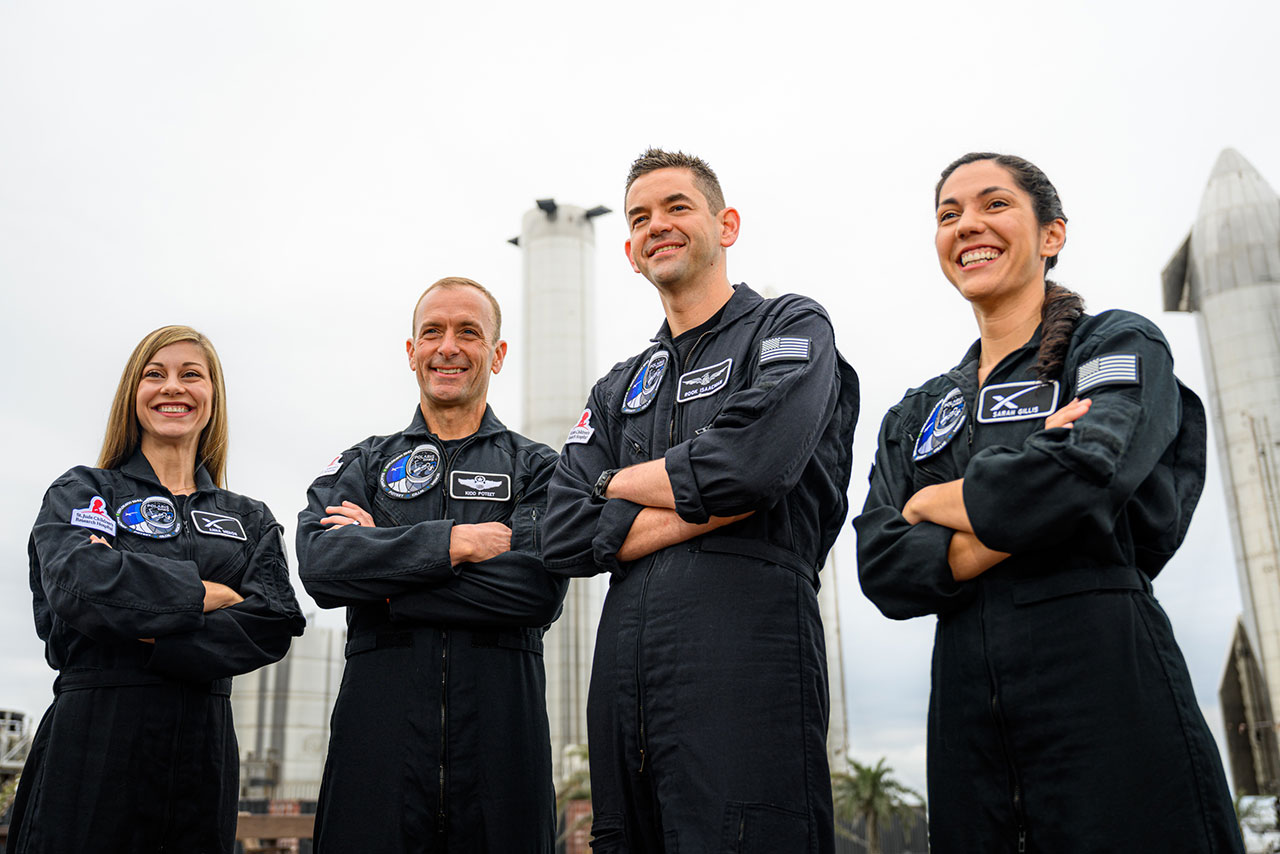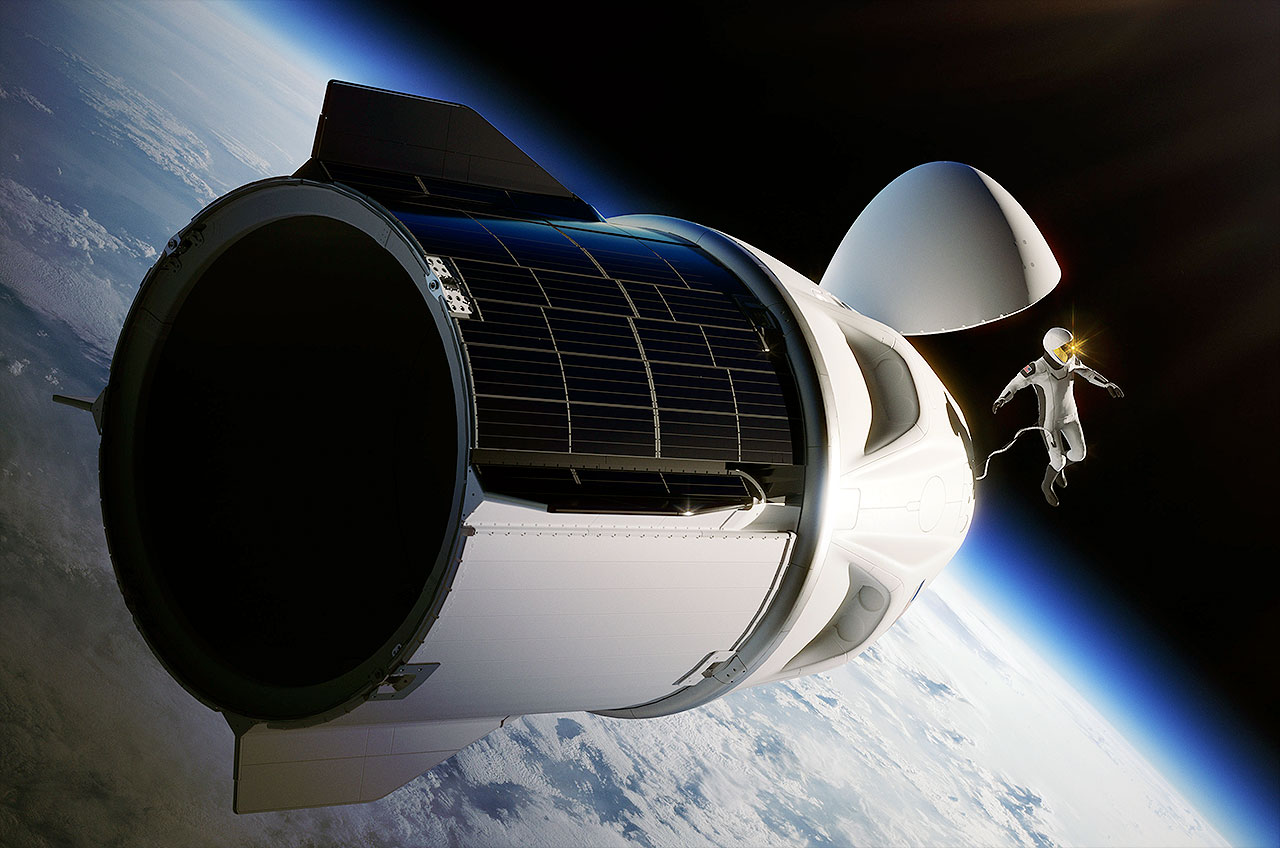
We won't see the first-ever commercial spacewalk this year after all.
SpaceX's private Polaris Dawn mission to Earth orbit has been pushed from late 2022 to no earlier than March 2023, according to the Polaris Program website, the organization planning the flight.
Polaris Dawn will lift off atop a SpaceX Falcon 9 rocket from Launch Complex 39A at NASA's Kennedy Space Center in Florida. That's the same pad that hosted the September 2021 launch of Inspiration4, the first all-private crewed mission to Earth orbit.
Related: SpaceX's private Polaris Dawn space crew talks about their ambitious mission (exclusive)
The four-person Inspiration4 was funded and commanded by billionaire tech entrepreneur Jared Isaacman, who will also lead Polaris Dawn. Like Inspiration4, Polaris Dawn will ride a SpaceX Dragon capsule in Earth orbit — but the coming mission will shoot a little higher.
Polaris Dawn "will take advantage of Falcon 9 and Dragon's maximum performance, flying higher than any Dragon mission to date and endeavoring to reach the highest Earth orbit ever flown," Polaris Program representatives wrote in a mission description. "Orbiting through portions of the Van Allen radiation belt, Polaris Dawn will conduct research with the aim of better understanding the effects of spaceflight and space radiation on human health."
The mission will also feature the first commercial spacewalk, which will be performed at an altitude of about 435 miles (700 kilometers), if all goes according to plan. For perspective: The International Space Station orbits an average of about 250 miles (400 km) above Earth.
Breaking space news, the latest updates on rocket launches, skywatching events and more!
Isaacman and his three crewmates also aim to raise money for St. Jude Children's Hospital in Memphis, a key goal of Inspiration4 as well.

The Polaris Program, which Isaacman funds, aims to advance human spaceflight capabilities, potentially helping our species get back to the moon and take the leap to Mars. The program also lists as a priority raising money for worthy causes and institutions such as St. Jude's.
The program will mount a total of three missions, if all goes according to plan. The second mission will also employ a Dragon, though we know little else about it; it's apparently still in the early planning stages.
Isaacman floated one intriguing possibility late last month, noting that Polaris flight two could potentially boost the orbit of, and perhaps also otherwise service, NASA's Hubble Space Telescope. That mission goal is contingent on the results of a joint NASA-SpaceX study that's investigating the feasibility of a Dragon mission to Hubble.
The third Polaris flight will be the first crewed mission of SpaceX's giant Starship vehicle, which the company is developing to take people and cargo to the moon, Mars and beyond. Starship will also serve as the first crewed lander for NASA's Artemis moon program.
Mike Wall is the author of "Out There" (Grand Central Publishing, 2018; illustrated by Karl Tate), a book about the search for alien life. Follow him on Twitter @michaeldwall. Follow us on Twitter @Spacedotcom or on Facebook.
Join our Space Forums to keep talking space on the latest missions, night sky and more! And if you have a news tip, correction or comment, let us know at: community@space.com.

Michael Wall is a Senior Space Writer with Space.com and joined the team in 2010. He primarily covers exoplanets, spaceflight and military space, but has been known to dabble in the space art beat. His book about the search for alien life, "Out There," was published on Nov. 13, 2018. Before becoming a science writer, Michael worked as a herpetologist and wildlife biologist. He has a Ph.D. in evolutionary biology from the University of Sydney, Australia, a bachelor's degree from the University of Arizona, and a graduate certificate in science writing from the University of California, Santa Cruz. To find out what his latest project is, you can follow Michael on Twitter.
